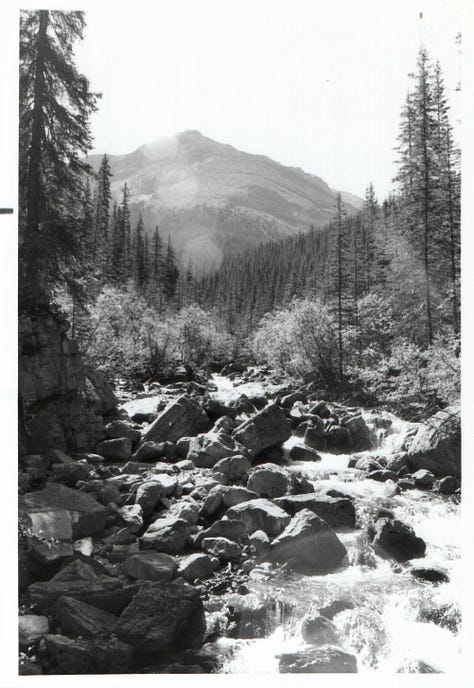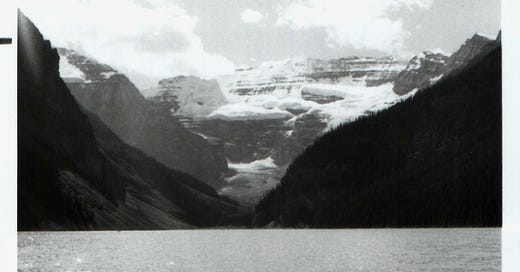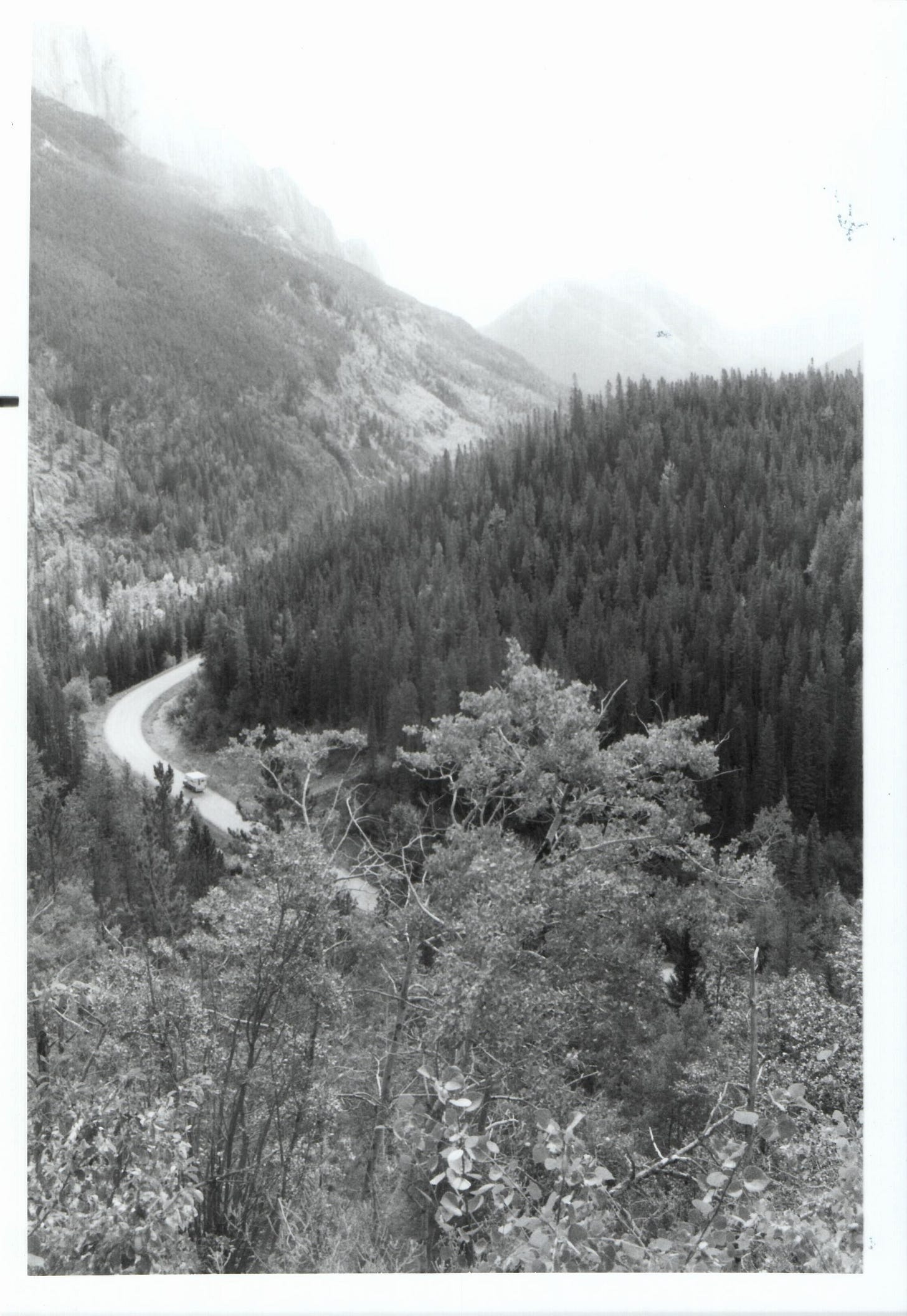Holding back tears, pointing fingers, and fanning the flames on social media
The Colossally Irrational Wildfire Edition - Just another August in Alberta
My Scottish/Irish ancestors arrived on the east coast of so-called “Canada” in the late 1700’s or early 1800’s and were part of several waves of genocidal colonization of the Indigenous people who were already here. We arrived uninvited on the traditional unceded territory of the Wəlastəkewiyik (Maliseet) whose ancestors along with the Mi’Kmaq / Mi’kmaw and Passamaquoddy / Peskotomuhkati Tribes / Nations signed Peace and Friendship Treaties with the British Crown in the 1700s. I like to start every new post by explaining my family’s history and keeping this foremost in my mind (and my writing) at all times. I know I have benefited as a result of colonization, and I find the history deeply troubling. It is what motivates me to understand the true history and advocate for real reconciliation. As a child in the 1970’s, I moved west with my family and am grateful to be writing this newsletter now in Moh’kinsstis, and the traditional Treaty 7 territory of the Blackfoot confederacy: Siksika, Kainai, Piikani, as well as the Îyâxe Nakoda and Tsuut’ina nations. This territory is also home to the Métis Nation of Alberta, Region 3 within the historical Northwest Métis homeland. I recognize that the land I now work and live on was stolen from these nations (truth) and I support giving the land back as an act of reconciliation. Lands inhabited by Indigenous Peoples contain 80% of the world’s remaining biodiversity. Indigenous Peoples’ traditional knowledge and knowledge systems are key to designing a sustainable future for all.
With Jasper residents due to return home beginning Friday, cracks are beginning to appear in Alberta Premier Danielle Smith’s claim that provincial equipment was not deployed to help fight the wildfire that swept through the Town of Jasper, after a Parks Canada statement contradicted her.
The premier held back tears at a news conference the day after the fire destroyed 30% of the structures in town, channelling the grief that so many Canadians shared at the assault on one of the country’s most beloved landscapes. But in the next breath, Smith deflected responsibility for those losses onto the federal government and the municipality.
In response to a question from a reporter about who was leading the wildfire response, Smith said Parks Canada and the municipality of Jasper were in charge of the firefighting, not the provincial government. With emotions running high on social media and amid widespread criticism of the response, she claimed the province’s equipment had not been called in to help before the flames reached the town.
But Parks Canada Fire Information Officer Michelle Macullo told The Energy Mix in an email that “the first AB Wildfire crew was on site within the first hour the fire was discovered. Water bombers and tankers were used on the fire within the first 48 hours.” But “it’s important to note this equipment, even when available, cannot be used when conditions are too dangerous.”
Read this article as it originally appeared in The Energy Mix.
A wildfire update posted to the Parks Canada website on July 23, two days before Smith’s media event, stated that “Parks Canada and Alberta Wildfire are partners in wildfire response and Alberta Wildfire is supporting Jasper National Park. Alberta Emergency Management Agency (AEMA) arrived in Jasper early this morning to assist.”
At her news conference, Smith told reporters “we can’t just send equipment into federal airspace without coordination. We can’t send in our helicopters with night vision, can’t send in water bombers without being integrated with them. We also are very quick to respond with dozers to be able to create fire guards and we can’t do that without them giving the order.” She said she would be talking with Emergency Preparedness Minister Harjit Sajjan about “allowing us to just be more integrated in the decision-making.”
As The Energy Mix went to virtual press, Alberta Wildfire had not responded to an email with questions about the differing accounts. We’ll update this story if and when we hear back from them.
Tugging At Our Broken Hearts
The drama and raw emotion at Smith’s news conference tugged at the hearts of so many of us, in Alberta and beyond.
When my parents packed up the family and headed west in 1978, I thought my life was over. I was an angry teenager and vowed never to forgive my parents for ripping me away from the east coast.
Looking out the small airplane window as we landed, it was as if we were disappearing into an endless boreal forest. A tiny ATCO trailer came into sight and I realized it was the “airport” in Fort McMurray where my father had been recruited to work at the tar sands (as the industry called itself at the time).
A full year passed and there were many tears as I longed for my New Brunswick “home.” My parents encouraged me to join a school field trip to Jasper. It was a long bus ride south to Edmonton (five hours) and then west along the Yellowhead highway for another four.
But seeing the Rocky Mountains for the first time was thrilling. I learned how to downhill ski at Marmot Basin, stayed at the Maligne Canyon youth hostel, and fell in love with the mountains. To this day, I believe it was that school trip to Jasper that won me over.
My father had vowed to stay a few years, but we’ve almost all settled in Alberta. More than 30+ years later, this province is now my home.
Over the years, I returned to Jasper several times with friends to camp at Whistlers, got married at the bluff overlooking the Miette and Athabasca Rivers near Tekarra Lodge (partially destroyed by the fire), rode the Jasper Tramway (before there was the Jasper SkyTram), and later introduced my two children to the elusive Pikas on one of the hikes on Mount Edith Cavell.
Jasper is gorgeous, wild, and unbroken by the relentless waves of tourism that have engulfed other national parks.
Of course, there were plenty of tourists, but local residents maintained the town’s unvarnished charm designed to welcome folks but not pander to the compulsive need for excessive shopping.
I’m not alone in my sadness. Social media has swelled in an outpouring of grief from and for Jasper residents, Albertans, and Canadians.
Read this article as it originally appeared in The Energy Mix.
A Shaky Evacuation
Only a few days before her news conference, Smith had called for improvements to the Alberta Emergency Alert notifications process, saying she had personally been “frightened and stressed” by the message sent out by text to mobile phones in the area.
The “information came directly from the Town of Jasper, and it is the first time the town had used the system,” Smith told reporters.
“We may need to have an additional step just to make sure when information is going out, it is communicated accurately so it doesn’t cause that kind of panic.”
The emergency alert issued late on July 22 said the fire would reach the community in five hours. A correction went out just under an hour later clarifying the evacuation should be completed within five hours.
Parks Canada told The Energy Mix first responders evacuated at least 25,000 residents and visitors, more than 245 of whom had to be transported from the backcountry.
In the end, the Municipality of Jasper decided to no longer use the emergency alert system. The town moved updates to its own website.
Climate Change Contributes to Largest Fire in 100 Years
Local officials said this was the largest fire in Jasper in 100 years. A 24-year-old Alberta Wildfire crew member was fatally injured by a falling tree August 3.
“Leading up to the wildfire in Jasper, weeks of hot, dry weather primed forest fuels for burning,” Parks Canada’s Macullo told The Mix. “All the fire indices, which measure how quickly fire will spread and what fuels are available to burn, were at extreme levels. The severity and intensity of the fire prevented (an) initial attack.”
She added: “Parks Canada recognizes that increasingly hotter and drier conditions, caused in part by climate change, are contributing to longer fire seasons, more extreme weather events, and changes to forest fuels, all [of] which contribute to more intense and severe wildfires.”
The Canadian Climate Institute and the Canadian Council of Forest Ministers state that “while forest fires are naturally occurring disturbances that contribute to the health and renewal of many forest ecosystems, fires are burning hotter and wilder as the climate warms, causing much greater destruction.”
The fire, which remains around 34,000 hectares, is still burning out of control not far from the town of Jasper, but recent cold and rainy weather has helped firefighters extinguish some critical areas. At a news conference Monday, officials announced that local residents would be welcome to return home beginning at 7 a.m. Friday to start the daunting ordeal of rebuilding.
But some of the memories of the fire, the evacuation, and their root causes won’t go away anytime soon.
Oil and Gas Profits On Fire
In late July, the mayor of Valemount, British Columbia took to social media to call out local gas stations for raising their prices as evacuees flooded the town. The small community took in a large number of people evacuated from Jasper in the middle of the night.
“I am absolutely disgusted with Valemount (caveat: local mgmt had no say) gas stations! Thank you (for) raising your rates during a multi-provincial evacuation. As long as Esso, Petro Canada and Shell shareholders made a few more bucks.”
Research last year showed 88 of the world’s largest emitting companies, 13 of them owned or operating in Canada, were responsible for nearly 40% of the land burned by wildfires in the western United States and southwestern Canada between 1986 and 2021.
Almost all the big industry players, including Suncor Energy Inc., Canadian Natural Resources Ltd. (CNRL), and Imperial Oil Ltd., have recently announced their second-quarter results.
Two of those three companies are on the list of the largest emitters contributing to devastating wildfires. Suncor also owns Petro-Canada. And the third, Imperial Oil supplies the Esso gas stations accused of price hikes in Valemount.
CNRL reported net income of C$1.25 billion for the second quarter and Suncor reported profits of $1.15 billion. Both surpassed Wall Street expectations, according to the Associated Press.
Imperial Oil’s quarterly profits rose 68%, Reuters reports, after the company’s “highest second quarter production in more than 30 years.”
The financial performance for all heavy oil producers this quarter was bolstered by the start-up of the Trans Mountain (TMX) pipeline expansion, which has enabled another 590,000 barrels of oil extraction per day since May 1.
There was no public quibbling over equipment to fight the fire threatening the TMX pipeline, which passes through Jasper National Park. In a news release on July 25, the company assured investors that everything was fine, since it had brought in its own firefighting equipment. There has been no damage to the pipeline and it continues to operate.
Read this article as it originally appeared in The Energy Mix.
















I am reading about the cooperation between governments to rebuild Jasper. I haven't found information on rebuilding metis settlements with the same speed. How many of these climate refugees from the north are now homeless on the streets of Edmonton?